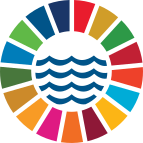Development of maritime spatial plan, defined in the National Strategy for Integrated Coastal Zone Management of Montenegro, prepared by the Ministry of Sustainable Development and Tourism in cooperation with UN Environment/MAP
(
Government
)
#OceanAction41207
Description
Prior to developing maritime spatial plan for the entire marine area, it would be optimal to test this approach by carrying out a demonstration project for a selected area. This would help to identify obstacles, propose measures and build capacities for introduction of maritime spatial planning. Spatial scope for implementing demonstration project for maritime spatial plan should be defined in relation to the level of available data. Given the experience with the CAMP MNE project, development of the plan for the Boka Kotorska Bay is proposed, simultaneously with and by using results of the pilot project on the application of EcAp in the Boka Kotorska Bay.
The project can be prepared as an individual proposal or placed into wider regional Mediterranean/Adriatic context. Project development should comprise detailed consultations with all included and interested parties.
Activities
To initiate maritime spatial planning, a demonstration project should first be implemented so that:
1. Type and availability of necessary data will be defined;
2. Consultations will be held for selecting an area for which the plan will be developed, starting from the initial proposal to develop the plan for the Boka Kotorska Bay on the basis of results of theoretical testing of the EcAp application in this part of marine area and results of vulnerability assessment of marine environment obtained within CAMP MNE;
3. Detailed environmental vulnerability assessment will be made for a selected marine area (Boka Kotorska Bay);
4. Maritime spatial plan of the selected marine area (Boka Kotorska Bay) will be developed;
5. Based on experiences in project implementation the existing obstacles for introducing a comprehensive system of maritime spatial planning should be analysed;
6. Measures for removing obstacles will be proposed and creation of conditions for their implementation initiated;
7. A series of workshops for strengthening capacities for maritime spatial plans development will be organised.
SDGS & Targets
Goal 14
Conserve and sustainably use the oceans, seas and marine resources for sustainable development
14.1
By 2025, prevent and significantly reduce marine pollution of all kinds, in particular from land-based activities, including marine debris and nutrient pollution
14.1.1
(a) Index of coastal eutrophication; and (b) plastic debris density
14.2
By 2020, sustainably manage and protect marine and coastal ecosystems to avoid significant adverse impacts, including by strengthening their resilience, and take action for their restoration in order to achieve healthy and productive oceans
14.2.1
Number of countries using ecosystem-based approaches to managing marine areas
14.3
Minimize and address the impacts of ocean acidification, including through enhanced scientific cooperation at all levels
14.3.1
14.4
By 2020, effectively regulate harvesting and end overfishing, illegal, unreported and unregulated fishing and destructive fishing practices and implement science-based management plans, in order to restore fish stocks in the shortest time feasible, at least to levels that can produce maximum sustainable yield as determined by their biological characteristics
14.4.1
14.5
By 2020, conserve at least 10 per cent of coastal and marine areas, consistent with national and international law and based on the best available scientific information
14.5.1
14.6
By 2020, prohibit certain forms of fisheries subsidies which contribute to overcapacity and overfishing, eliminate subsidies that contribute to illegal, unreported and unregulated fishing and refrain from introducing new such subsidies, recognizing that appropriate and effective special and differential treatment for developing and least developed countries should be an integral part of the World Trade Organization fisheries subsidies negotiation
14.6.1
Degree of implementation of international instruments aiming to combat illegal, unreported and unregulated fishing
14.7
By 2030, increase the economic benefits to Small Island developing States and least developed countries from the sustainable use of marine resources, including through sustainable management of fisheries, aquaculture and tourism
14.7.1
Sustainable fisheries as a proportion of GDP in small island developing States, least developed countries and all countries
14.a
Increase scientific knowledge, develop research capacity and transfer marine technology, taking into account the Intergovernmental Oceanographic Commission Criteria and Guidelines on the Transfer of Marine Technology, in order to improve ocean health and to enhance the contribution of marine biodiversity to the development of developing countries, in particular small island developing States and least developed countries
14.a.1
14.b
Provide access for small-scale artisanal fishers to marine resources and markets
14.b.1
Degree of application of a legal/regulatory/policy/institutional framework which recognizes and protects access rights for small‐scale fisheries
14.c
Enhance the conservation and sustainable use of oceans and their resources by implementing international law as reflected in United Nations Convention on the Law of the Sea, which provides the legal framework for the conservation and sustainable use of oceans and their resources, as recalled in paragraph 158 of "The future we want"
14.c.1
Number of countries making progress in ratifying, accepting and implementing through legal, policy and institutional frameworks, ocean-related instruments that implement international law, as reflected in the United Nations Convention on the Law of the Sea, for the conservation and sustainable use of the oceans and their resources
SDG 14 targets covered
| Name | Description |
|---|---|
| 14.2 | By 2020, sustainably manage and protect marine and coastal ecosystems to avoid significant adverse impacts, including by strengthening their resilience, and take action for their restoration in order to achieve healthy and productive oceans |
| 14.5 | By 2020, conserve at least 10 per cent of coastal and marine areas, consistent with national and international law and based on the best available scientific information |
Deliverables & Timeline
Resources mobilized
Partnership Progress
Feedback
Action Network

Timeline
Entity
SDGs
Geographical coverage
Ocean Basins
Communities of Ocean Action
More information
Countries
Contact Information
Jelena Knezevic, Head of Department for Sustainable Development and Integrated Coastal Zone Management

